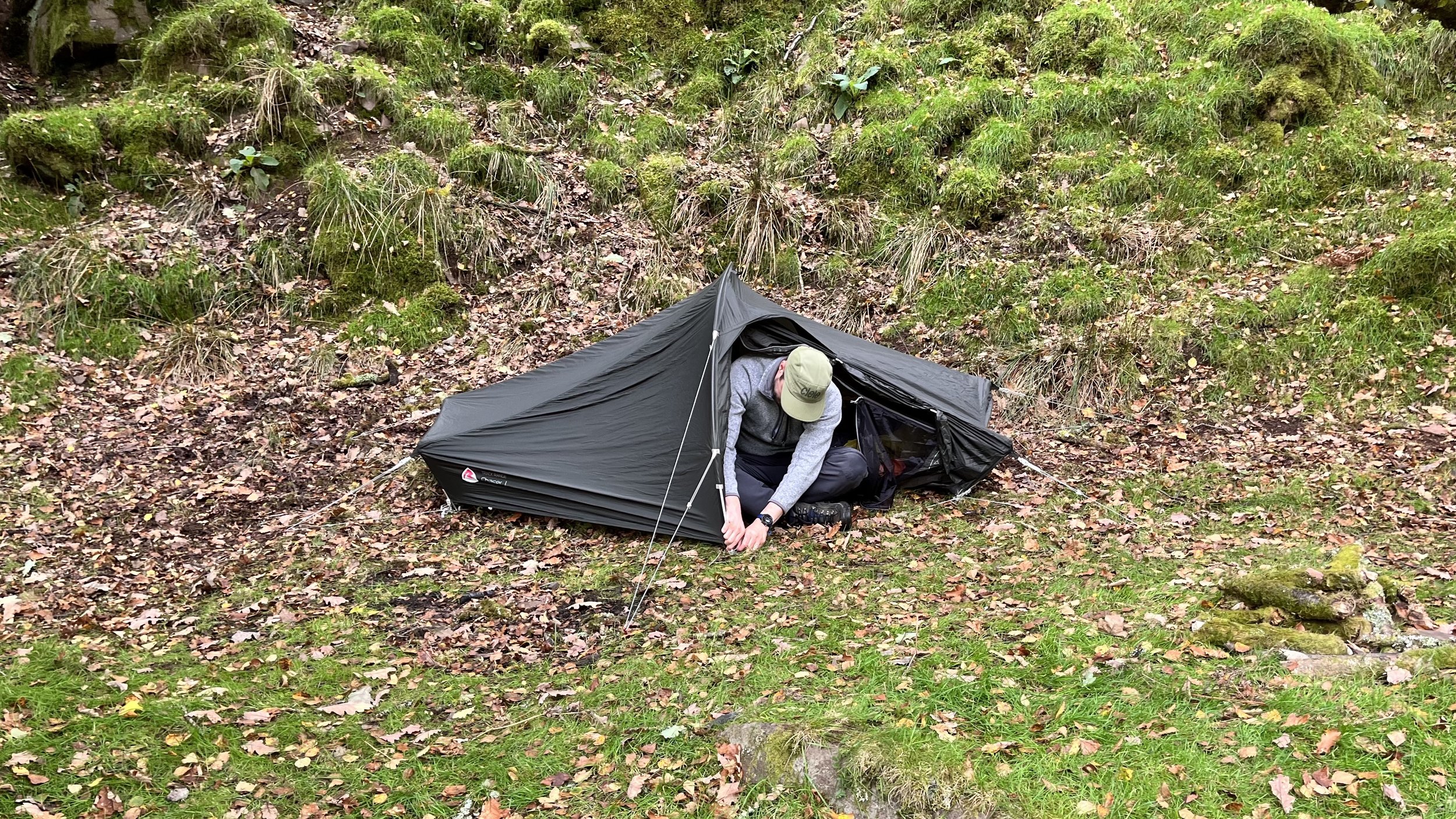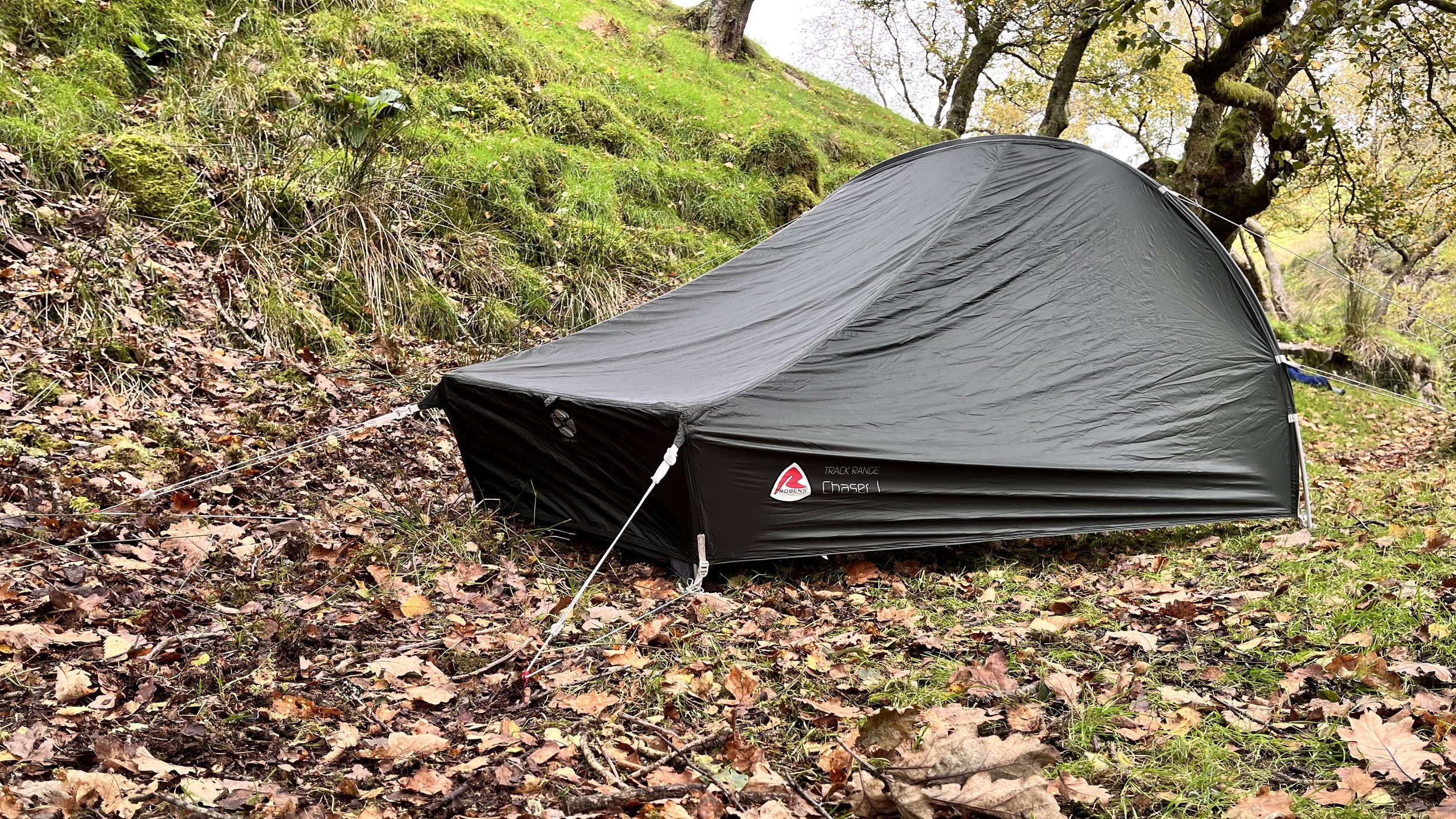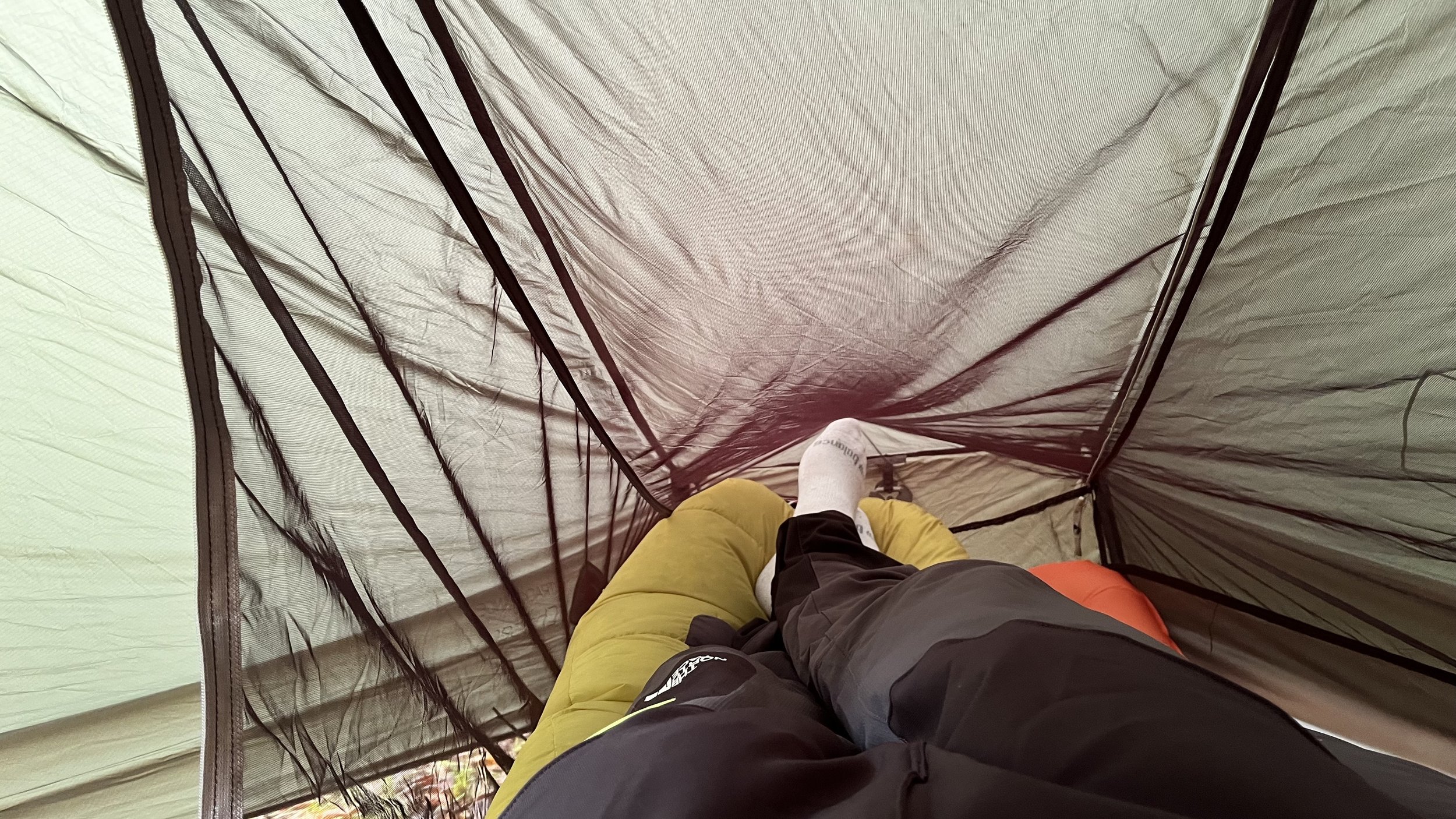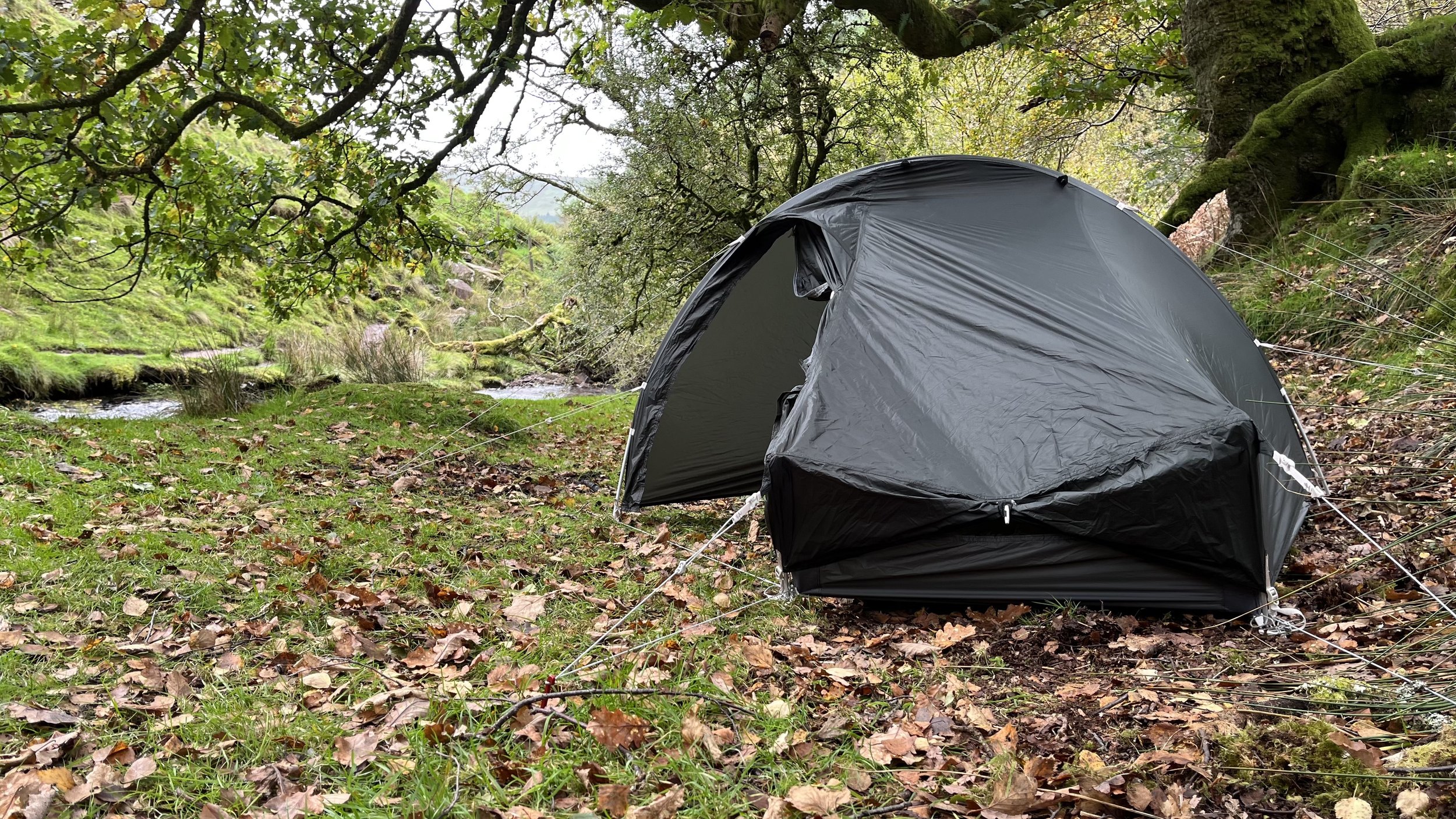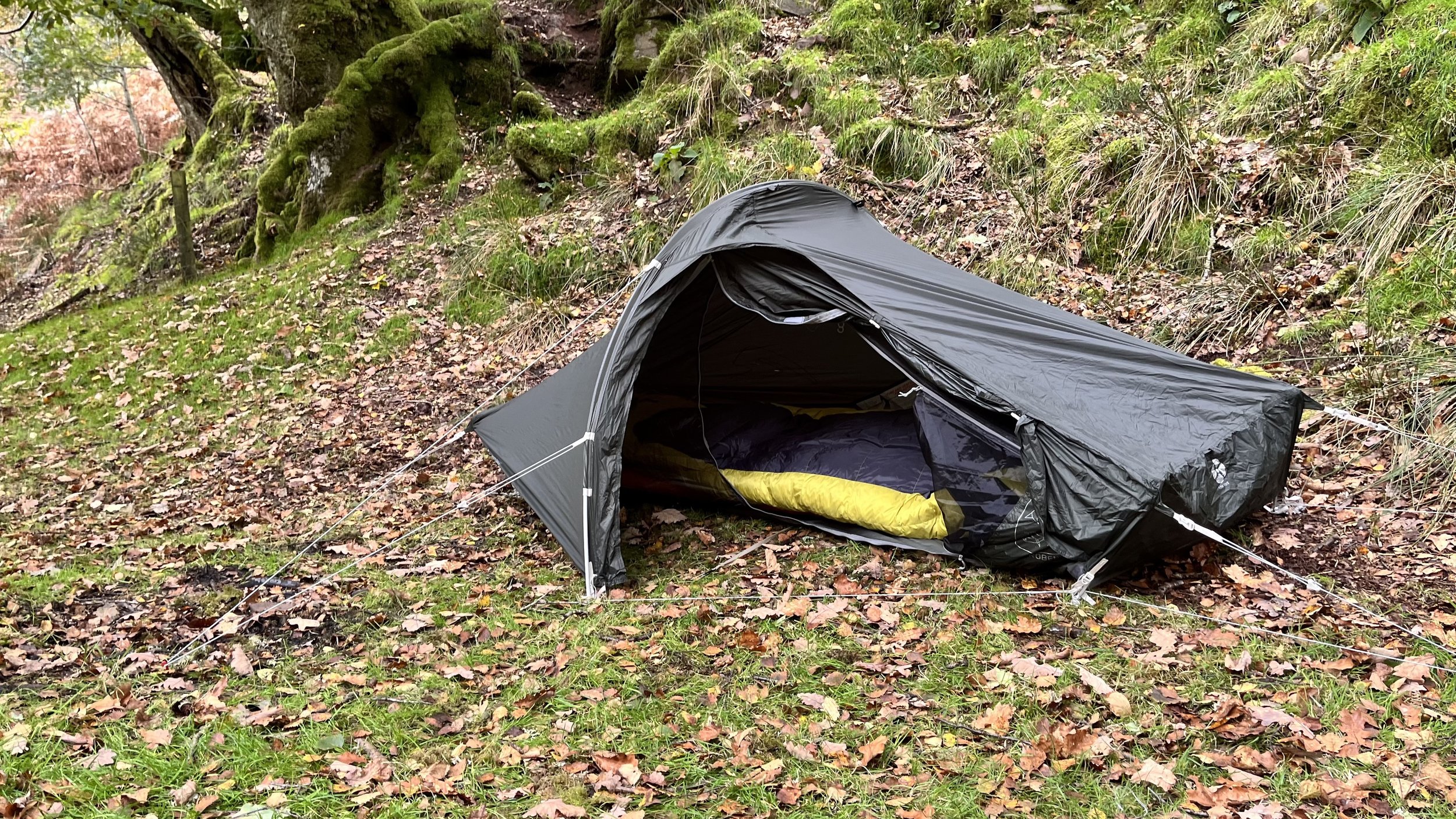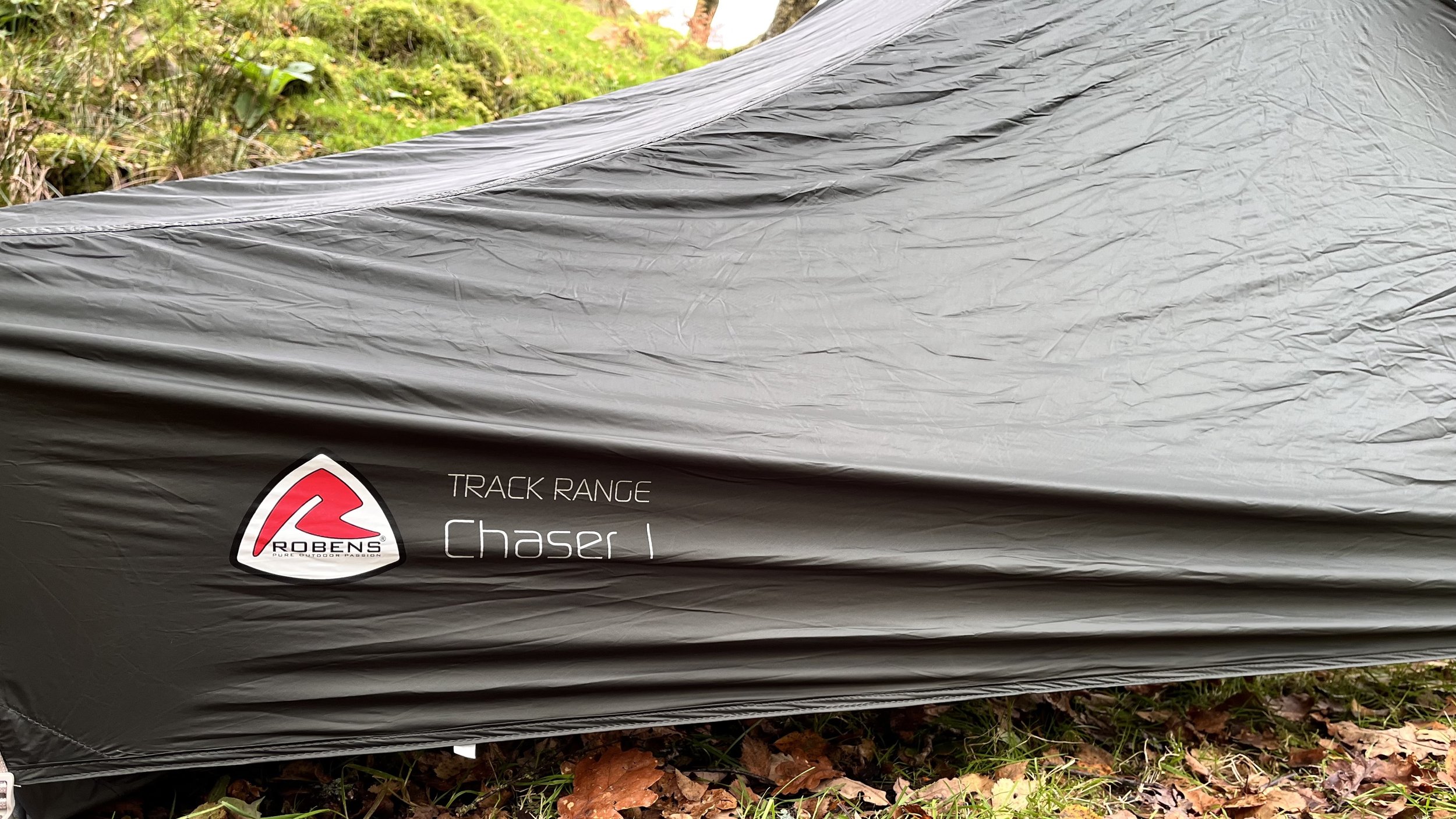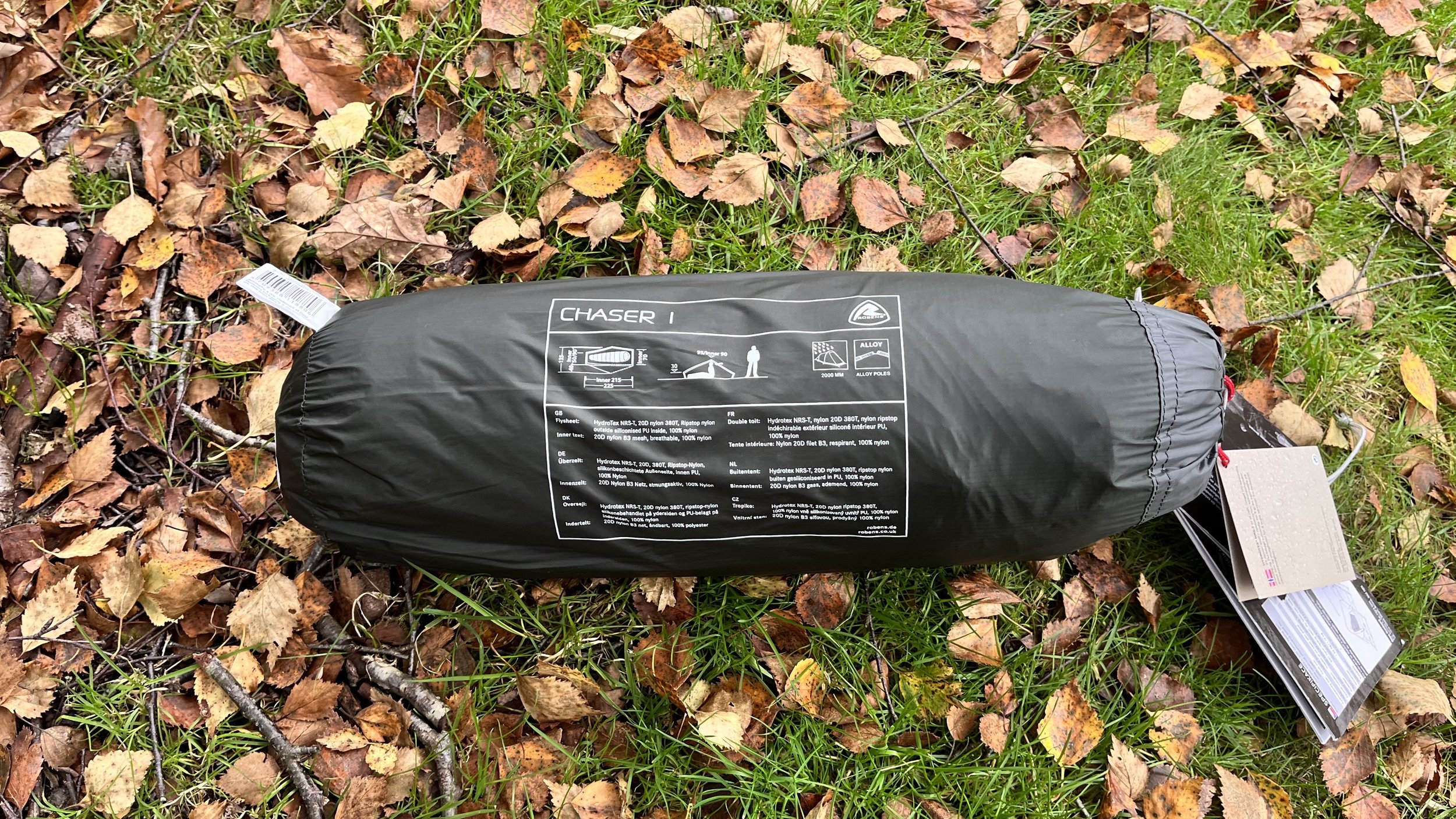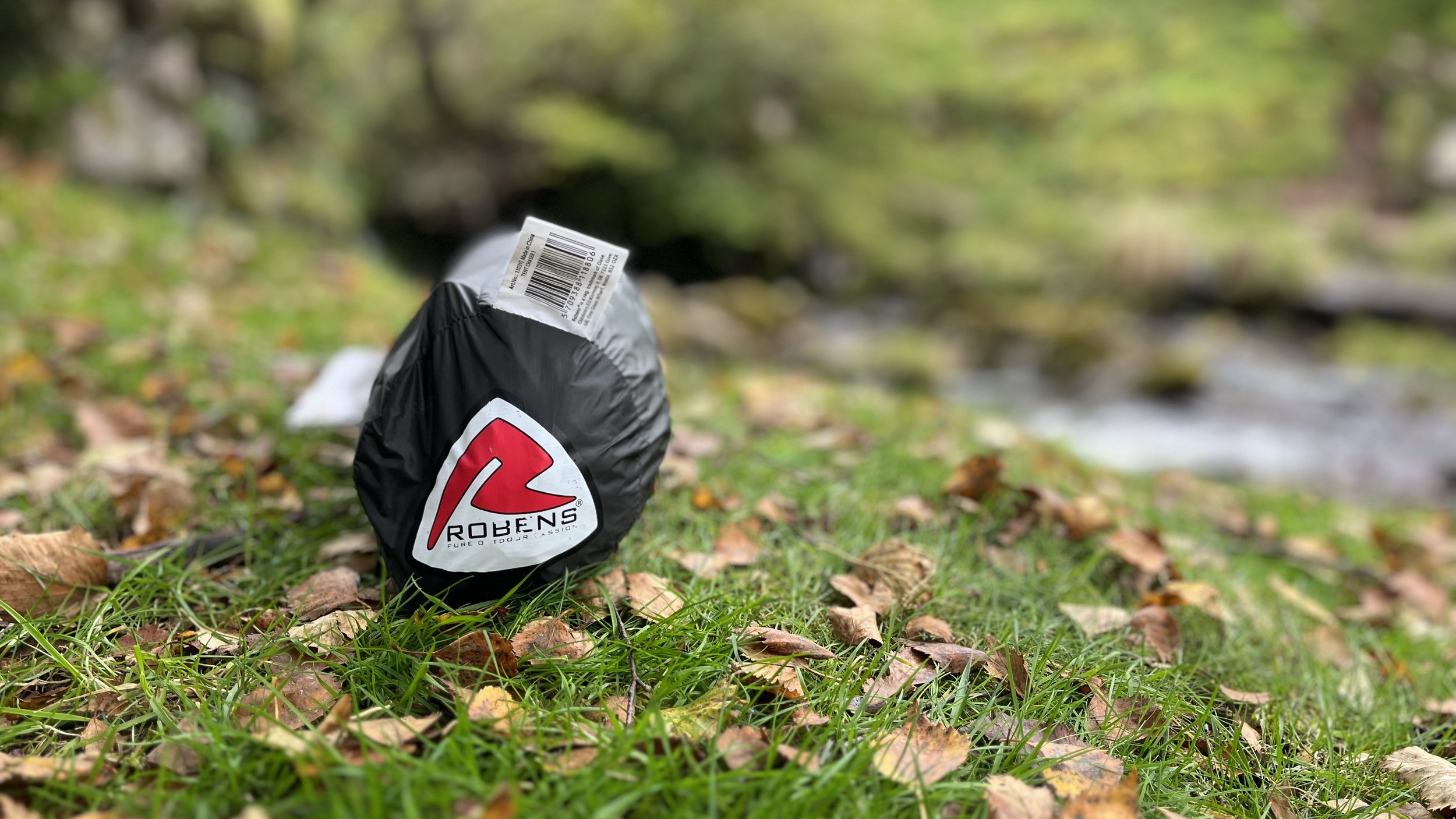Robens Chaser 1 review: An excellent UL shelter that outperforms its price
Featuring a tiny pack size, a simple design, a versatile fly that can be pitched in various configurations and a total weight of just over 1 kg, the Robens Chaser 1 is a very impressive shelter — and one that lends itself well to a variety of different sports in changing UK conditions.
The Robens Chaser 1
Ideal for: Wet and windy backpacking, fastpacking or bikepacking trips, any three-season adventuring in the UK.
Not suitable for: Use in snowy conditions or during deep winter trips when it gets cold.
The Robens Chaser 1 is a brilliantly engineered lightweight tent that delivers proper three-season protection without adding bulk. Weighing just 1.25 kg, it’s light enough for fastpacking and bikepacking, yet tough enough to handle wild British weather. Across Dartmoor and Bannau Brycheiniog, it stood up to driving rain, high winds and rough ground with ease — impressive for something barely larger than a bivvy bag when packed. With wind ratings up to 192 km/h, this thing can take serious punishment, all while offering enough space for one person and a full three-season kit. Add in its quick and easy pitch, compact pack size and versatile fly configurations, and you’ve got a highly capable solo shelter that balances weight, durability and function beautifully. The Robens Chaser 1 punches well above its class — and for many solo adventures, it’s all the tent you’ll ever need.
The Good
Amazing performance in UK conditions, such as driving wind and rain
Easy to pitch
Very low profile
Lightweight
Tiny pack size
The Bad
Small inside
Lots of mesh
The Robens Chaser 1
The Robens Chaser 1 is a lightweight 1-person tunnel tent courtesy of the same folks that brought us the ever-impressive Starlight 1 and the Elk River 1, one of our favourite tents of all time. Designed to be lightweight, easy to carry yet sturdy as a brick house in some wicked British wind, the Robens Chaser 1 is a shelter that delivers more than you’d ever expect from such a small and lightweight package.
Weighing a super impressive 1.25 kg, the Robens Chaser 1 is decidedly lightweight for such a high-performing shelter. In fact, Robens themselves have wind-tested this shelter in gusts of up to 200 km/h. During sustained testing, collapse occurred at an average of 192 km/h. And if those figures don’t mean much to you, let us put it plainly: this tent can put up with some serious abuse. It can withstand driving rain and punishing wind, and it does so all while being slightly bigger than a UL bivvy bag when packed away in its stuff sack. For reference, the average wind speed on top of Scotland’s Cairn Gorm, the windiest summit in the UK, is 53 km/h. So the Chaser can make easy work of that — all while being small enough to take on any hike, bikepacking or fastpacking trip, as we’ve done during our months of testing it at the GBAC.
When bought directly from Robens, the Chaser 1 costs £334.99 at the time of writing. But at the moment, you can currently pick it up for £224.99 from Outdoor Action, making it an even more attractive deal for anyone after a serious solo tent that punches well above its weight. It’s small, very lightweight and performs valiantly in driving wind and rain. What’s more, the Chaser 1 is a cinch to pitch, going up in a matter of minutes if you set up on the right ground. In fact, the only downside is that due to the fully mesh inner (something that helps keep its weight and pack size so impressively small), we wouldn’t recommend using this tent in 4-season conditions for fear of too much heat loss. Therefore, for us, the Chaser 1 serves as one of the best options on the market right now for a small and versatile 1-person shelter that can be used on any three-season long-distance trips where weight is at a premium, be that as part of a hiking, bikepacking or mountaineering set up.
Our experience using the Robens Chaser 1
To test the Robens Chaser 1, we put this thing seriously through its paces. We took it out on numerous jaunts across Dartmoor National Park where we hiked big miles over multiple days, and we even climbed some summits in Bannau Brycheiniog National Park truncated by a couple of nights of wild camping in the eastern fringes of the Brecon Beacons. In fact, due to its size and weight, we even took the Chaser 1 on a multi-day fastpacking trip where we compared its performance against a lightweight bivvy bag, a shelter that’s generally considered more appropriate for these sorts of activities. And you know what? Each time it performed amazingly: it continually impressed us due to its ability to withstand truly atrocious British weather, all while being so small and lightweight that we barely even noticed it in our packs — even when we ran over 40 km with it in there.
Aside from its versatility, weight and pack size, one thing we particularly enjoy about the Robens Chaser 1 is the ease with which you can quickly pitch it. Coming with a standard single-pole tunnel design, it’s simply a matter of sliding through the centre pole, pegging out the corners and then moving things around a little to get a tight pitch. Due to the tunnel design of the tent, however, the whole structural integrity of the shelter relies on you being able to effectively peg out all four corners; something that we ran up against when camping out on Dartmoor. As we couldn’t always get 4 pegs into the granite-ridden ground covering Dartmoor’s high tors, we occasionally struggled to get a perfect pitch, having to resort to moving the tent around a few times to find a spot where the ground was deep enough to hold the pegs. Truthfully, however, on exposed windy tops like those on Dartmoor, this would have still been an issue even if we were camping in a freestanding dome tent. Sure, the tent would have taken shape and provided some sort of an enclosure for getting out of the wind. But without any pegs properly holding it down, we would have been tossed around in there like a tennis ball in a tumble drier.
Pitching and packing away the Robens Chaser 1
When pitching the Chaser 1, one thing that also stands out is the fact that there are tensioners everywhere. High quality and super easy to use, you can pull cords tight and move things around to get the perfect pitch. As is common on Robents’ tents, you can also lash the guy lines around the poles to create a super strong shelter in the windiest conditions, something we tend to do even on days when barely a whisper of wind is forecast. For ventilation, generous ports at the head and the foot end of the tent can be opened or closed to regulate airflow. To keep weight and pack size down, these are controlled by a simple latch and loop system which, despite being something we hadn’t seen before, is very easy to use and works surprisingly well.
What’s more, packing this tent away in the morning is decidedly simple. You just remove the pole and the pegs, fold the tent up and roll it all together. The four corner poles provide a central point to which you can wind around all of the material to pack it away as tight as possible. Then you just need to return it to its stuff sack ready for dropping back into your pack. This is something that we particularly appreciated every time we tested the Chaser 1: especially on frosty mornings, it was easy to run through this process while wearing gloves, and we found we were always first to have our tent taken down and packed away — something that speaks to the level of consideration Robens made when designing the cracking little Chaser 1.
Space inside
Inside the tent, there’s enough space for one person, a wide pad, a full sleeping set up and extra bits of kit. What’s more, featuring a decent-sized vestibule, you’ve extra space for storing a wet pack or loading out further gear, or even for cooking meals out of the wind. That being said, the Chaser 1 is intentionally tiny: much like the similar Starlight 1, the inner offers only enough space for one body and some unpacked gear. There’s no room inside for a rucksack or for unloading tons of kit, the type you might use on a four-season expedition. You’ll need to store all of this in the vestibule. Coming with a height of 90 cm, however, we found that we could always comfortably sit up in this shelter, even when perched on a thick pad, such as the Big Agnes Zoom UL. What’s more, at 215 cm in length, there’s more than enough room for a 6-foot person to stretch out and keep some kit either at the head or the foot end of the tent.
The Robens Chaser 1’s various pitching options
Finally, it’s worth noting that the Chaser 1 comes with versatile pitching options. In total, you can pitch this thing in a standard fashion (i.e. fly sheet over the inner), or you can take the poles out of the fly and attach them to the inner to pitch it inner-only (though we don’t think you’ll get many opportunities to do this in the UK). You can also fold back the fly sheet to have it half-open on reliably dry summer days. Or you can leave the inner out altogether, pitching only the fly sheet for trips where weight is properly at a premium. This will give you a reliably weatherproof place to spend the night, but much like a standard tarp set-up, you’ll be on your own when it comes to the creepy crawlies.
Robens Chaser 1 FAQs
-
The Robens Chaser 1 performs excellently in UK summer conditions. Lightweight, easy to pitch and super strong in both wind and rain, the tent is an ideal shelter for changing UK summer conditions as it comes with ample ventilation options and a full mesh inner for improved temperature regulation. What’s more, to make the most out of those rare clear nights in Great Britain, you can also fully remove or partially retract the fly – giving you a direct view of the sky and allowing you to sleep under a blanket of a billion stars.
-
The Robens Chaser 1 is a decidedly three-season tent. Due to its amazing ability to but off huge gusts of wind and put up with deluges or rain, however, we have comfortably used this tent several times through the winter. That being said, as the inner comprises practically 100% mesh, it wouldn’t do a great job at keep you warm on the coldest nights, so for that reason we’d suggest you look at something else for deep winter camping, such as the cheaper Robens Starlight 1.
-
In our experience, the Robens Chaser 1 performs phenomenally in windy conditions. In fact, Robens wind tests the Chaser 1 in speeds of up to 200 km/h (125 mp/h), with the tent showing the first signs of failing at around 192 km/h (120 mp/h). We found this to be an accurate reflection of performance and wouldn’t think twice about pitching the Chaser 1 on a summit in all but the very worst conditions — the type you wouldn’t want to camp in anyway.
-
It’s very easy to pitch the Robens Chaser 1. Doing so is simply a matter of pegging out one corner, inserting the centre pole, and then pegging out the remaining three corners. The pull chords on each corner can then be pulled tight to keep the Chaser 1 up. You can then peg out the door and the backside of the tent, as well as the two guy lines, to give this tent maximum structural integrity. Unfortunately, however, due to the Chaser 1’s tunnel design, you need a fairly large amount of tension on each corner. To achieve this, it’s crucial to drive each peg deep into the ground. Because of this, we’ve run into the odd snag in places like Dartmoor where it can be tricky to find deep ground (unobstructed by plates of rock).
-
Yes, we think the Robens Chaser 1 is worth the money. In fact, at £334.99, we think you’d be hard-pressed to find a shelter that performs as well in the various conditions the Chaser 1 excels in without spending substantially more.
Conclusion
All in, we think the Robens Chaser 1 is a phenomenally designed and well-thought-out little shelter. It’s light enough to carry on multi-day fastpacking trips, but tough enough to withstand savage wind and rain that would flatten many tents in this weight class. The single-pole tunnel design is simple, intuitive, and fast to pitch — even in freezing conditions when your hands barely work. And thanks to its compact pack size, you’ll barely notice it in your pack whether you’re out hiking, bikepacking or covering big miles on foot.
Sure, it’s not the most spacious tent in the world — but that’s exactly the point. It delivers just enough room for one person to ride out rough conditions in comfort, with smart design touches like multiple pitching options, solid ventilation, and that brilliantly practical vestibule for stashing gear or cooking when the weather’s grim. And with Outdoor Action currently offering it for £224.99, it’s seriously good value for money.
If you’re after a lightweight solo shelter that doesn’t compromise on weather performance or build quality, the Robens Chaser 1 absolutely deserves a place at the top of your shortlist.
